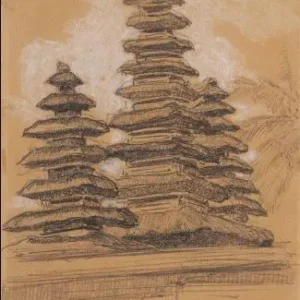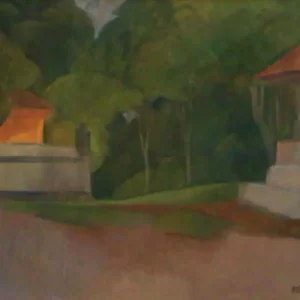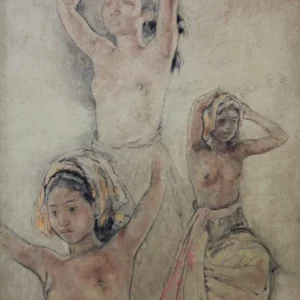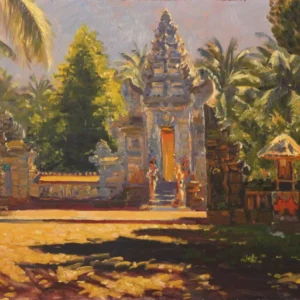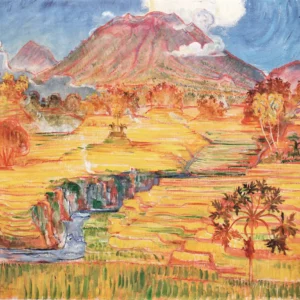It could be argued whether Willem Dooyewaard (1892-1980) was a painter who traveled, or a traveler who painted. It is beyond any doubt, however, that Dooyewaard had a great passion for Asia, a passion he shared with a man who would become his soul brother, the Austrian painter Roland Strasser (1895-1974). Over a period of 20 years, between 1912 and 1932, Dooyewaard traveled through Asia. After finishing his studies at the Royal Acadamy of Art in Amsterdam in 1912, he spent 6 years at a rubber plantation in Sumatra, before he left for Bali. It was in Bali where he met and befriended Roland Strasser, in 1922. The two artists worked together and traveled together, defying hardships of all kinds, and observing things that were hardly ever observed before by Europeans. Dooyewaard and Strasser managed not only to visit, but also immortalize on paper and canvas the people of China, Mongolia, Japan, India, and Tibet, to name but a few. Bali, however, takes a special place in Dooyewaards body of work Dooyewaards Balinese oeuvre can be divided into three periods: his stays in 1920, 1922-23 and 1931-32. Stylistically, these three periods differ quite a bit; his 1920 work comprises small pencil sketches, with a documentary feel to them, similar to the sketches he made in Sumatra in 1918-1919; the second part of his Balinese oeuvre, after having met Strasser in 1922, is much more convincing: his sketches are bold and confident, his oils very determined, clearly choosing an almost divisionist style. Dooyewaard was greatly influenced by Roland Strasser. In 1931, shortly after marrying Jacoba Reinders in Japan, he enjoys a third stay on Bali, initially intended to be Willem and Jacoba’s honeymoon. During this period, his work developed into the impressionist style that Dooyewaard is best known for. His favourite themes are legong dancers (mostly portrayed full length onto one-meter high canvases), cock fighters, and girls portrayed as market vendors.
Showing the single result


